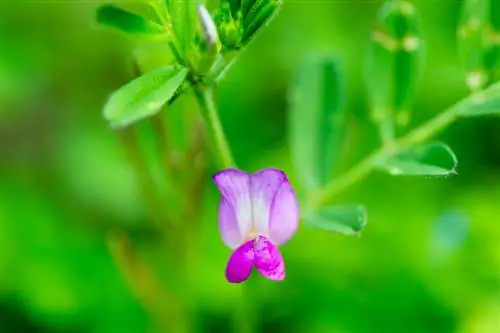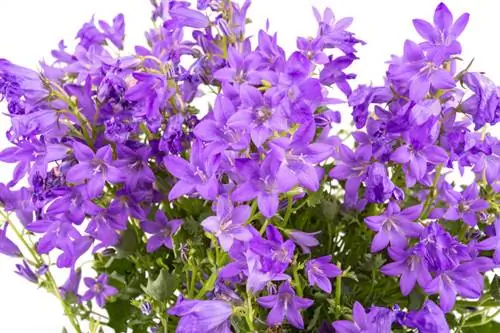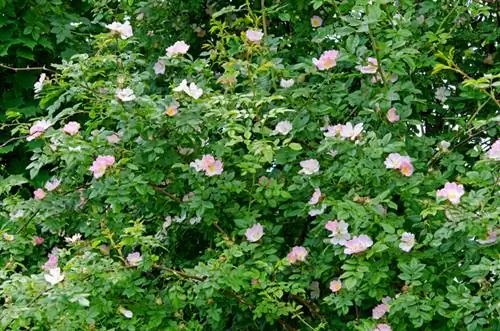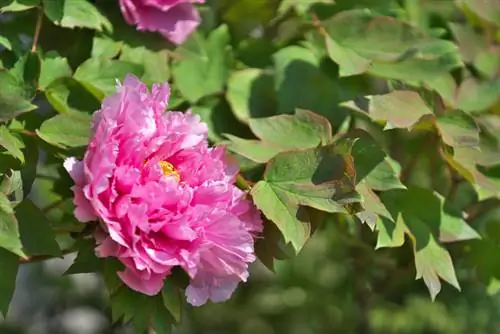- Author admin [email protected].
- Public 2023-12-16 16:46.
- Last modified 2025-01-23 11:20.
Richly flowering sweet peas are an attractive addition to any cottage garden. To ensure that the plants continue to sprout new flowers, it is important to clean them out regularly in the summer months. How you proceed with pruning also depends on whether you are maintaining a real or perennial vetch in your garden.
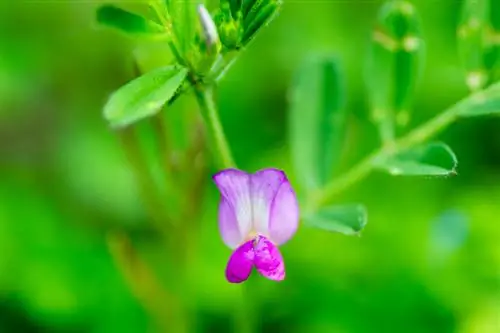
How do you cut sweet peas correctly?
Veches should be cut regularly to encourage new flower production. Withered and dead shoots should be removed; a cut just above an outward-facing bud is ideal. Cut back radically in autumn or spring.
The cut of sweet pea (Vicia)
Vetches are ideal as cut flowers for the vase. The repeated cutting of some flower shoots is beneficial for the abundance of flowers because the plant is stimulated to produce many new flowers.
If vetches want to grow too high or grow sparingly, you can cut the summer bloomers as follows:
- Carry out a topiary in the morning hours, removing all disturbing shoots.
- Always cut just above an outward-facing bud.
- Everything that has faded and dried out is consistently cleaned out to stimulate flower formation. This also prevents seed formation, which costs the plant a lot of energy.
Vicia thrives as an annual perennial plant that has to be sown every year. In autumn the plant is therefore cut back completely and the rhizomes are dug up.
If you would like to plant or sow sweet peas for the coming gardening year, you should not remove all the dead flowers in early autumn. Allow the elongated pods to mature until they begin to open at the sides. Now you can take these cuttings, remove the seeds, let them dry on a piece of kitchen paper and store them until next spring.
Cutting sweet peas (Lathyrus)
You should also regularly cut out faded and wilted shoots from the perennial vetch. Pruning not too heavily in the summer months stimulates the growth of the perennial plant, which then thrives particularly beautifully and bushy.
Since the perennial vetch sprouts every year, it is radically cut back to about ten centimeters above the ground in autumn or spring. We prefer spring pruning because the dead branches provide natural protection from the cold. In mild regions you can even save yourself additional winter protection with brushwood.
Tip
Cut sweet peas for the vase if possible in the morning, when the dew has just evaporated and the flowers are just beginning to open. They are then particularly durable.

